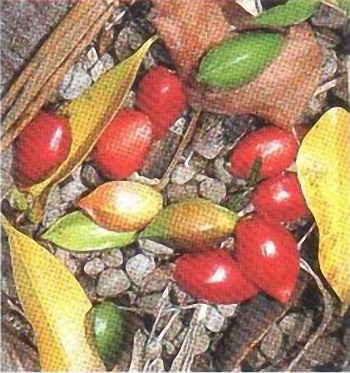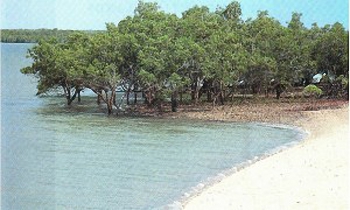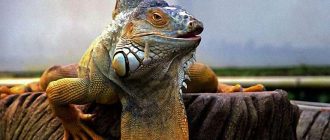The Australian Wet Tropics lie in the eastern parts of Queens-land, north of the Tropic of Capricorn. They include pockets of tropical rainforest and extensive areas of woodland with isolated paperbark swamps and rich coastal mangrove populations.

The rainfall is seasonal, with very wet summers and drier winters, and varies considerably, from as little as 1000 mm (40 inches) in the southern areas to over 3700 mm (144 inches) near the Daintree River. Isolated high peaks, such as Mt Bellenden-Ker, (1615 m/5300 feet) and Mr Lewis (1224 m/4015 feet), and the lowland rainforest of the Daintree River, are home to many endemic species.
Tropical rainforest
Tropical rainforests are restricted to areas between Proserpine and Mackay and then north of Towns-ville in Queensland. Of the lowland rainforests. The Daintree World Heritage Area is one of the most diverse areas of plant species, with a very high proportion of primitive flowering plants and gymno-sperms.
The tall cycad Lepidozamia hopei reaches more than 20 m (65 feet) high in this area. Epiphytes and palms are common, including almost pure stands of the fan palm. Australia’s only Phalaenopsis orchid also occurs here. The Mossman Gorge National Park is home to the Mt Spurgeon pine, and too many rare and threatened epiphytic orchids.

Highland tropical rainforests occur on the Atherton Tablelands and on the high peaks. While some species are found in both lowland and highland forests, most occur in one or the other. In the high-land forests, there are generally fewer lianes, and at the highest altitudes the tree canopy is much lower, and lichens and mosses festoon the trees.
Clouds and mist are present most of the time, and the high humidity allows epiphytes and lithophytes (plants growing on rocks) to thrive. Australia’s only Rhododendron species are found here. Both have red flowers and occur as Lithophytes. The beautiful heath Dracophyllum sayeri, with its long tapering leaves and inflorescences of candlestick-like pale pink flowers, can also be seen here.
Woodlands
While rainforests occupy isolated pockets in the wet tropics, woodlands are widespread. These are generally open and dominated by eucalyptus, Moreton Bay ash, ghost gum, long-fruited bloodwood and the semi-deciduous white gum being some of the most common.
The conifer Callitris intratropica, which can reach 30 m (100 feet), is also widespread on sandy soils. The shrubs in these areas are varied, with several Grevillea species common.
Wetlands
The extent of the wetlands varies greatly with the season, but the permanent waterholes, also called billabongs, are home to many interesting aquatic plants.
Several species of paperbark inhabit these wetlands, as do water lilies, marshwort, the pink lotus flower, the unique carnivorous pitcher plant and unusual insectivorous liverworts.
As well as these permanent residents of the wetlands, there are also many ephemeral plants that thrive in the wet season and shortly afterwards and then die as the water subsides, their seed awaiting the following seasonal rains. These also include a few insectivorous species, such as sundews and Byblis linifolia, which possesses sticky hairs on its stems and leaves with which to crap insects.
Mangroves

The mangroves of the Australian wet tropics are a diverse group, with some 48 species representing many different families. They form a very important role in the ecology or die sea and river estuary shores, preventing erosion and providing many fish species with their breeding grounds.
They are also home to the saltwater crocodile. Because mangroves grow in mud that is virtually airless, most produce roots which are exposed to the air at least at low tide.

The exposed roots known as pneumatophores, are filled with a spongy tissue and have numerous small holes in their bark through which oxygen is transferred to the below-water root system. These prop roots sometimes form almost impenetrable forests.
The degree to which mangroves can stand saline conditions varies with the species.
Some, known as freshwater mangroves, require regular flooding with fresh water from river flows to survive.
One such species is the mangrove palm, Nypa fruticans, which produces huge, prostrate, subterranean stems with giant fronds up to 9 m (30 feet) long arising from the growing tip.
Another species that prefers some fresh water is the cannon ball mangrove, Xylocarpus granatum, which can grow to 8 m (26 feet), and which has red-grained timber and globular fruits that can be up to 20 cm (8 inches) in diameter.




